Steaming vegetables without a steamer is something I learned during my time as a sales representative for the top cooking system in Germany, the AMC. The unique AMC cooking methods are cooking vegetables without adding water and frying meat without adding fat. Today I’m going to show you how to use the same method in a non-AMC pot that you might have.
Why not cook vegetables in water?
Most people cook vegetables in salted water, just the same way grandma did it.
Think about it, if you brew yourself some tea, you drink the tea and throw out the leaves. The tea contains most of the nutrition value the leaves had.
If you cook yourself some potatoes, you eat the potatoes and throw out the water. What is the difference? How much do you think gets lost if you boil something for 20 minutes?
Vegetables do not need to be boiled in water. They taste much better steamed. Vitamins, minerals, and flavors are much better retained than by conventional cooking with water.
Why is steaming vegetables without a steamer better than in a steamer?
A steamer can be useful in the kitchen. Those are great pots to have. However, even though we do own a steamer, I prefer to steam vegetables without a steamer.
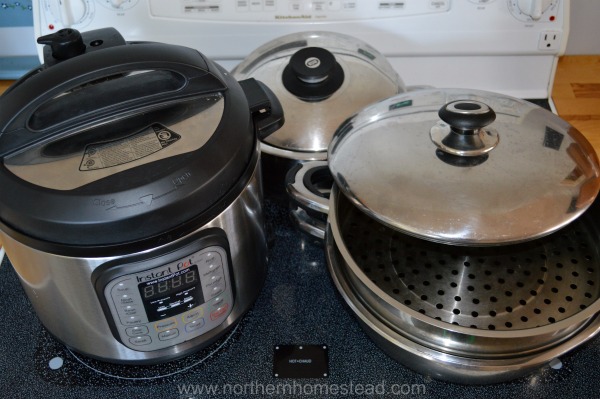
A steamer is usually a pot with an insert that has holes in it. The water is underneath and the veggies are in a basket. There are different varieties of this, but the idea always is that the boiling water generates steam which rises and cooks the vegetables while doing so.
A steam juicer, by the way, works just the same way. The process is called steam juice extracting, meaning the steam extracts the juice from the fruit or vegetables.
Now, if you have a steamer and steam vegetables in it, you proprocess the veggies on lower heat and less time then say steam juicing, but still the steam will extract some of the juice/nutrients from the vegetables you are steaming.
For some veggies, boiling might actually be better than steaming.
Here is how to steam vegetables without a steamer
By steaming vegetables without a steamer in a normal pot you can have the best of both worlds: the vegetables are cooked without losing taste and nutrients into the water they are boiled in or steamed with.
So let’s get started.
1. Choose the right pot
For cooking vegetables without boiling them in water, you want a good pot with a hermetically sealing lid. A lid that lets to build up condensate in the pot. You also want a thicker bottom, so that the heat is spread evenly.
The size matters too. You want your pot to be filled 3/4 with veggies, that way the condensate can build up on the underside of the lid and drop down to the bottom. For fewer veggies choose a smaller pot.
2. Use some water
Use some water, depending on the pot and lid you are having. If the lid of a pot does not close the pot tightly, more water will evaporate, so you do need more in the beginning. The AMC pot does not need any additional water. It takes some practice to find out how much water your pot needs, but it’s well worth it! The water is there to protect the vegetables from burning and for generating of the steam – not for boiling the vegetables in it.
3. Layer the vegetables
Layer the vegetables into the pot, the vegetables with longer cooking time first and the others on top. For example: potatoes(bottom) -> cauliflower(middle) -> broccoli(top).
Asparagus and peas can be cooked side by side because they need approximately the same cooking time. Because the vegetables are not cooked in water, each will keep its color and also its own taste. Every vegetable can of course also be cooked separately, but why, if you can save energy and use fewer pots (and who wants to clean unnecessarily many pots). Close the lid and start the cooking process.
3. Choose the heat setting
Never use the high heat setting on your range. Choose medium-high heat. Select for example out of 6 units a 4, out of 9 units a 6. Heat till the lid feels very hot (too hot to the touch), and then turn the heat down to low. Do not open the lid of the pot, so that the cooking process is not interrupted. Again, it takes some practice, but you’ll learn quickly!
After you turned down the heat, start the cooking time. Steaming takes a bit longer than boiling, and can hardly be overcooked.
Enjoy
Now that you know how to steam vegetables without a steamer try it out and you will never go back to water boiled vegetables. The richness in taste, the texture, and the nutrient content are so good. I usually do not use salt for cooking, the veggies have so much own flavor without salt.
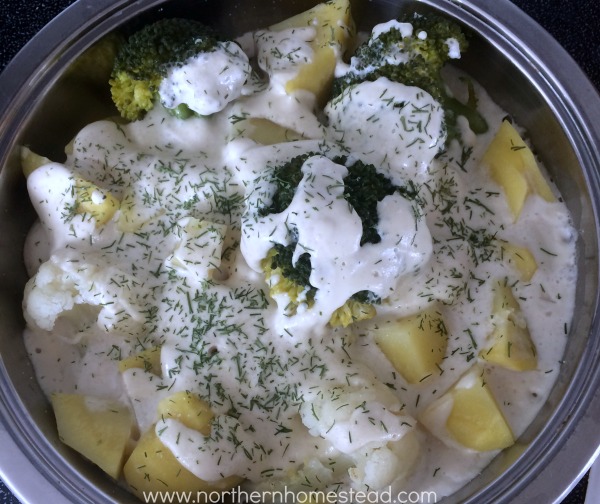
We like steamed vegetables topped with a homemade whole-food plant-based cream sauce. And this way steamed potatoes make the best mashed potatoes ever.
We invite you to subscribe to Northern Homestead and follow us on Facebook or Pinterest for more great recipes.


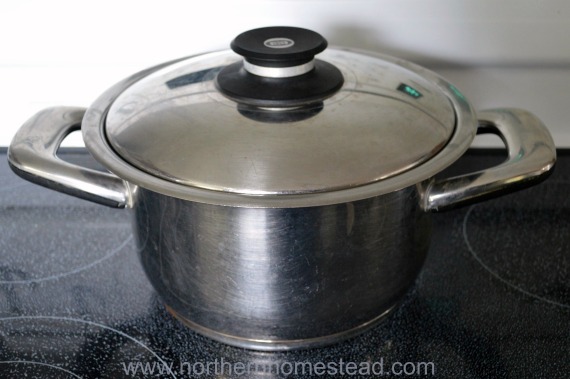
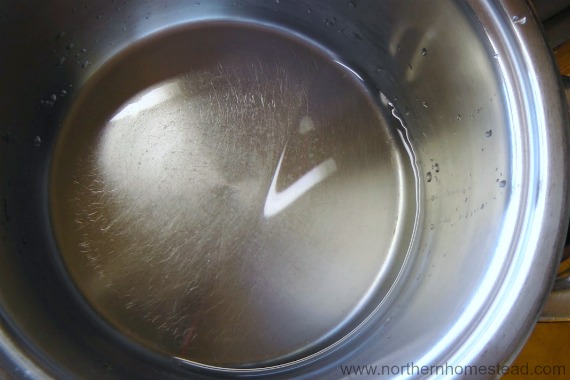
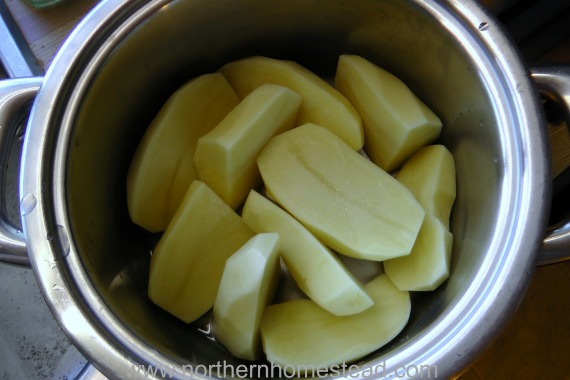
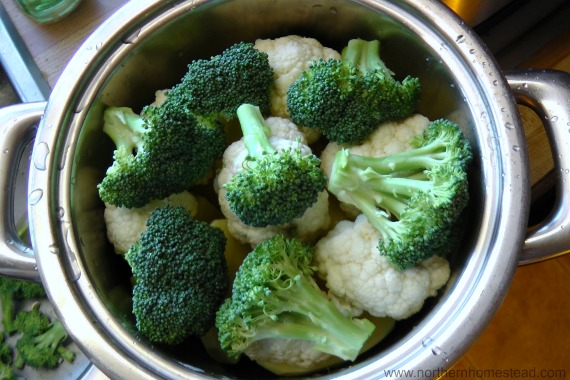
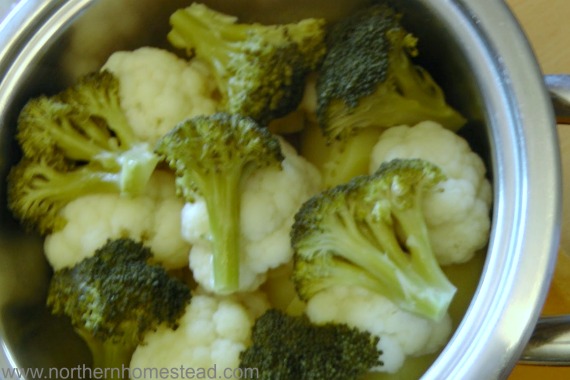







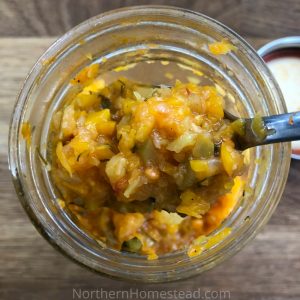
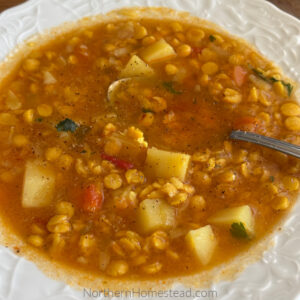
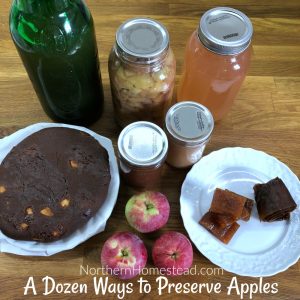

I steam my veggies, too. Sometimes I use a steamer, but other times I use the same method that you shared. I don’t like waterlogged veggies! But, I’ve never thought to steam potatoes. I’m going to try it next time I cook potatoes. Thanks!
Hope you like it Alli.
I can’t remember the last time I boiled vegetables – I LOVE them steamed! Now, I have a steamer, but sometimes I have to do several rounds to do all the veggies I want to do, so this is a great post! Pots I have in abundance 🙂
I know, it is so great to be able to do them all in one pot.
Steamed vegetables are yummylicious! (New word) Now I want some! We are having leftovers today but steamed veggies will be on the dinner table later this week.
Love the new yummylicious word! I LOVE veggies too!
I’ve been considering getting a steamer, but after reading this I think I will get a good pot instead.
Yes, a good pot is all you need.
I’ve never owned a steamer and I DO boil my vegetables:( Because that’s how mom did it. But after reading this I think I will forever be able to steam my veggies without the steamer:) Thanks for sharing with us at the Merry Monday Link Party!
You are welcome! And I am sure you will love the steamed veggies.
I’m a veggie steamer, too! And for my asparagus, I use a skillet (like you would use for rice pilaf) slice red onions and lemons. I turn on the heat to the onions and lemons while I prepare the asparagus, then add them to the top, cover and let it steam for about 8-10 minutes… delicious! 🙂 No water necessary–the moisture comes from the onions and lemons. Celery is also another great veggies with lots of water content for steaming. 🙂 PINNED!
~Lorelai
Life With Lorelai
Oh my, your asparagus version sounds so yummy! Thank you for pinning!
The veges themselves looks yummy. I always cook veges in large amounts of water and then throw out the water – you make a good point that many nutrients get lost in when cooked like this. Like your way better! Glad you linked this up with us a the Home Matters Linky Party!
I know, it is the common way of cooking. Cooking without all the water will take some learning, but is so much better.
Whews you save me some expense I needed to steam vegetables for. My practical but don’t own a steamer
It really does work well without a steamer, but you do need a good pot to do it in. Hope it worked well for you.
A report in The Journal of Agriculture and Food Chemistry concluded that over all, boiling was better for carrots, zucchini and broccoli than steaming. Maybe you should do your research before implying that steaming veges is more nutritious then boiling.
They are talking about a different way of steaming, the water bath steaming the way a steam juicer works. This is not the steaming I’m talking about (please read the post again). Here we use the same pot as for normal cooking, but without using the water. This way all the nutrients are preserved in the vegetables and not build out into the water.
The steaming will be easier and the vegetables keep their color better if you add the water after it has come to a boil. Heat water in a separate pot. Have vegetables layered and ready to go in the larger saucepot with tight fitting lid. Pour the boiling water gently over the veggies and quickly cover. Finish “steaming” at medium heat for about 5-7 minutes. Turn off heat and remove cover to preserve color best. Serve.
This sounds helpful. How much water do you pour over the vegetables? Thank you.
Like I say in the article, the amount depends on your pot or pan. Start with half a cup and see if it’s too much, meaning there is lots of water left in the bottom after the veggies are cooked, use less next time.
Thank you. I’m trying to understand the method. You mention that the vegetable don’t cook in water, but doesn’t the first layer of vegetable touch, and therefore, cook in the water? I’m wondering, too, if I can use my calophon stainless steel pans to steam in . Thanks again.
Yes, you right the bottom few millimeters are in the water. However, if you get it just right, by the end of the cooking process there will be no water in the pot left. Any pan can be used that has a good lid.